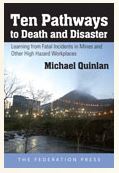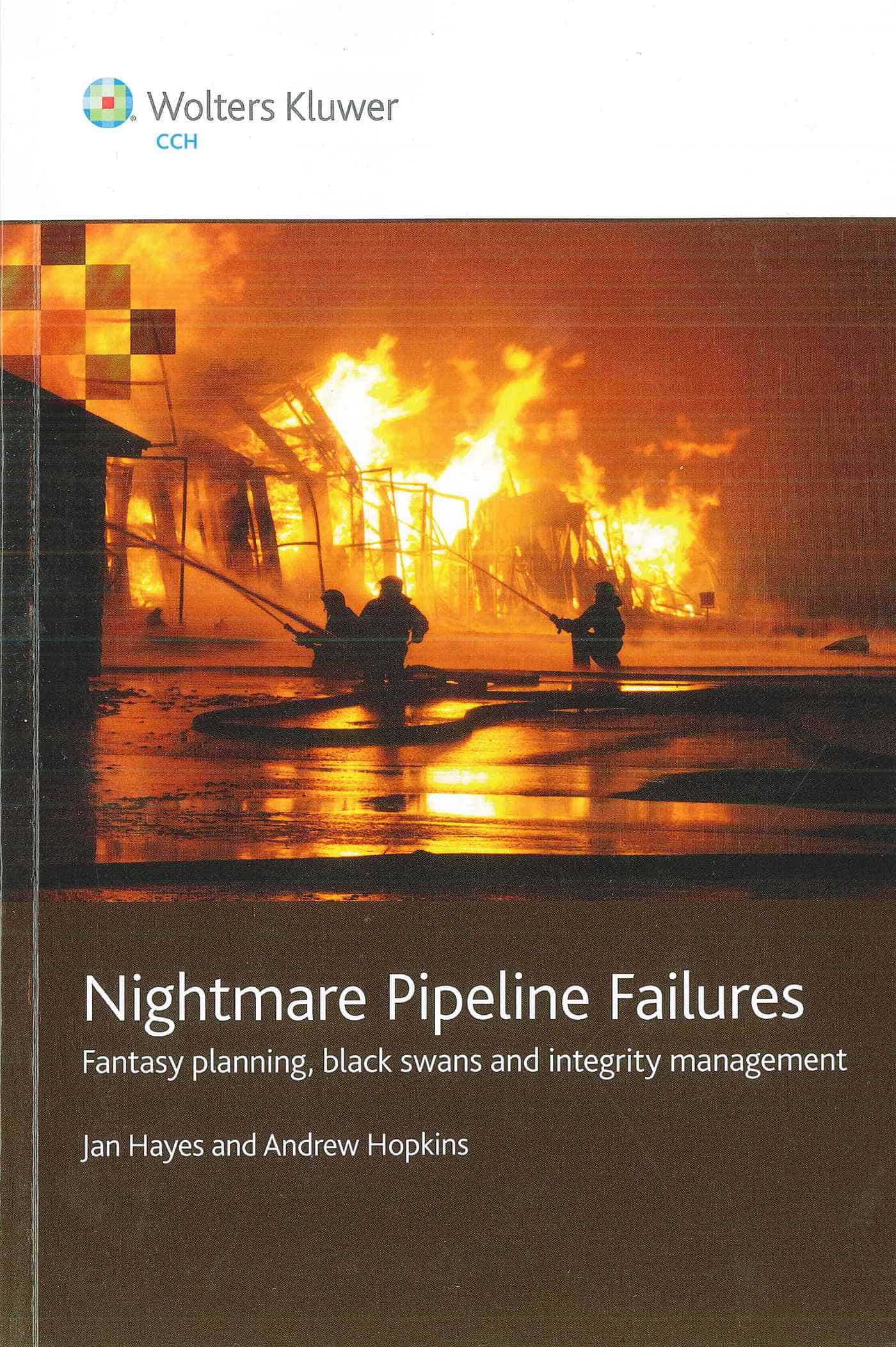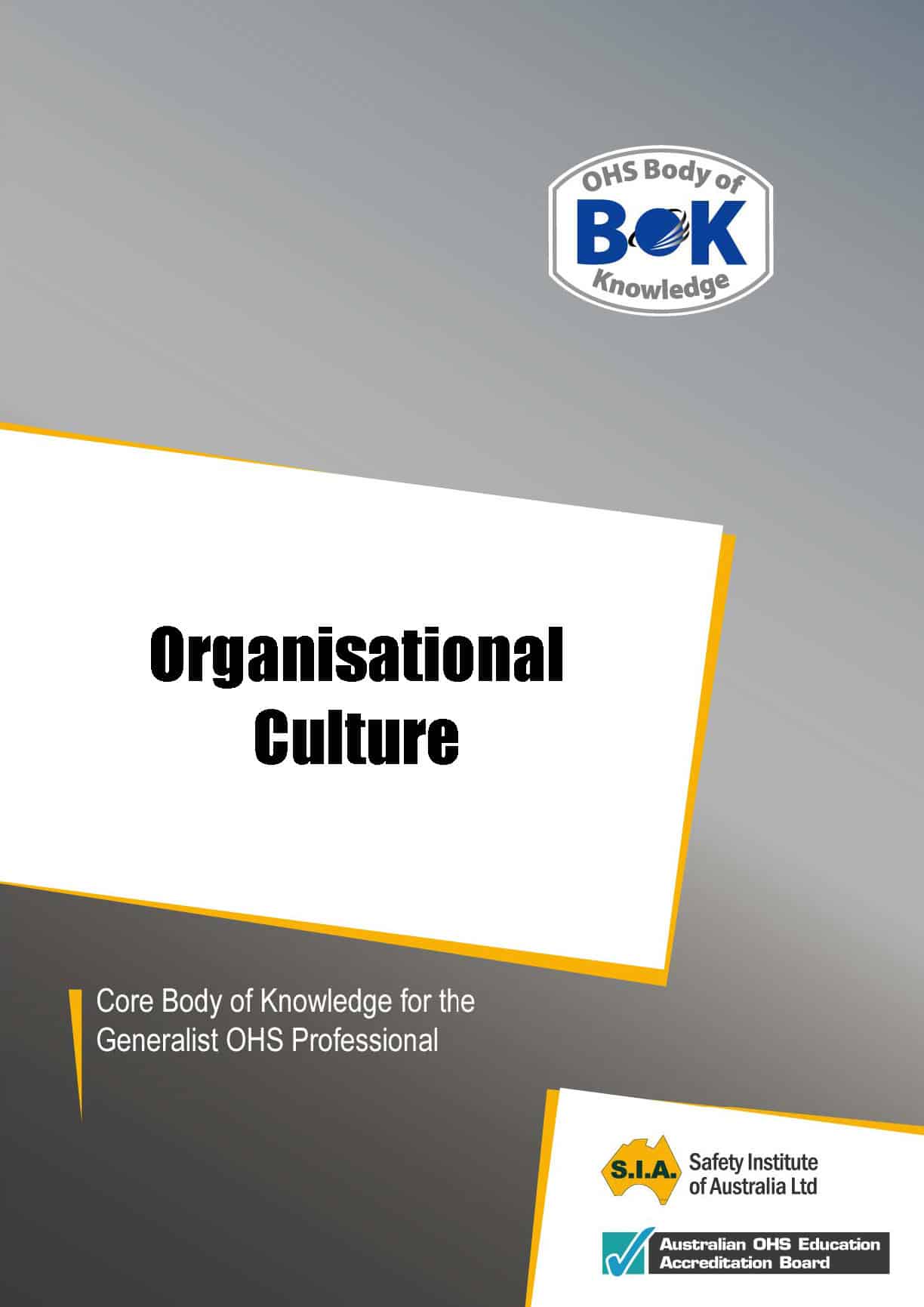Recently I spoke at the
Category: culture
Master guide or handbook
In 2012, SafetyAtWorkBlog reviewed the first edition of the Australian Master Work Health and Safety Guide. CCH Wolters Kluwer has released its second edition and, sadly, it repeats many of the criticisms in the 2012 review.
 The title of Australian Master Work Health and Safety Guide (2nd ed) seems inaccurate if one considers a book with “master ” in its title to be a “masterwork”. This is not a masterwork and the publishers have emphasised to SafetyAtWorkBlog that the book was never intended to be. The book is intended to be a brief outline of the most important contemporary occupational health and safety (OHS) issues in Australia and to provide practical advice, checklists and templates. In fact, the word that should be focussed on in the title is “guide”.
The title of Australian Master Work Health and Safety Guide (2nd ed) seems inaccurate if one considers a book with “master ” in its title to be a “masterwork”. This is not a masterwork and the publishers have emphasised to SafetyAtWorkBlog that the book was never intended to be. The book is intended to be a brief outline of the most important contemporary occupational health and safety (OHS) issues in Australia and to provide practical advice, checklists and templates. In fact, the word that should be focussed on in the title is “guide”.
The publishers advised that “master” is in the title to indicate it is part of its “Master Series“, a “brilliant” series described as
“Australia’s premium range of professional books, widely accepted as the leaders in their fields.”
SafetyAtWorkBlog looked at a couple of chapters to assess the quality of the content. As workplace bullying is such a contentious issue. the Bullying and Violence chapter was a focus. There were a surprising number of omissions in this chapter.
New book challenges current OHS trends
 Professor Michael Quinlan has a new book that focuses on lessons from recent mining disasters but, as with the best of occupational health and safety (OHS) books, it challenges orthodoxies. Some OHS consultants and experts have built careers on these orthodoxies, trends and fads, and will feel uncomfortable with the evidence put forward by Quinlan in “Ten Pathways to Death and Disaster – Learning from Fatal Incidents in Mines and Other High Hazard Workplaces“. The honesty and humanity in this book makes it an essential part of any OHS professional’s library.
Professor Michael Quinlan has a new book that focuses on lessons from recent mining disasters but, as with the best of occupational health and safety (OHS) books, it challenges orthodoxies. Some OHS consultants and experts have built careers on these orthodoxies, trends and fads, and will feel uncomfortable with the evidence put forward by Quinlan in “Ten Pathways to Death and Disaster – Learning from Fatal Incidents in Mines and Other High Hazard Workplaces“. The honesty and humanity in this book makes it an essential part of any OHS professional’s library.
Quinlan establishes an important tenet from the very start:
“… knowledge is not created in a social vacuum.” (page xi)
This simple dictum is vital to an understanding of the true causal factors on OHS decision-making. People die from OHS failures. Politicians create laws and situations that can encourage failures, increase risk and can provide a veneer of respect for heartlessness and exploitation. Business owners may feel pressured to place production before safety. Some OHS writers and advocates stop, often unconsciously, at the point where their theory or market research would fail scrutiny. Some apply critical thought only “as far as is reasonably practicable” to continue a business activity that is short-term or to sell their consultancy package to gullible or naive corporate executives.
Quinlan writes of the “political economy of safety”:
“The political economy perspective argues that safety, including workplace disasters, can only be understood in the context of the distribution of wealth and power within societies, and dominant social policy paradigms that privilege markets and profit, production or economic growth over safety.” (page 24, emphasis added)
To many readers this may sound like socialism in its mention of wealth distribution and power but such a perspective is valid even though it may be unfashionable. Such a broad perspective allows for a critical assessment of other OHS research approaches such as, for instance, the culture advocates.
New book on pipeline safety has OHS lessons for all
 Any new book by Andrew Hopkins is a cause for excitement. The latest book co-written with Associate Professor Jan Hayes* focusses, primarily, on two pipeline disasters in the United States but has sufficient information and thoughts for those OHS professionals outside this sector and jurisdiction.
Any new book by Andrew Hopkins is a cause for excitement. The latest book co-written with Associate Professor Jan Hayes* focusses, primarily, on two pipeline disasters in the United States but has sufficient information and thoughts for those OHS professionals outside this sector and jurisdiction.
“Nightmare Pipeline Failures: Fantasy planning, black swans and integrity management” is a typically slim volume written in Plain English that benefits from the broad knowledge of its authors. Readers of Hopkins’ early books will get all of the cross-references. In some ways, this book can be seen as almost a case-study of Hopkins’ work on mindfulness and high-reliability organisation, as the themes of management perspectives, activity and decision-making occur repeatedly in this book. Continue reading “New book on pipeline safety has OHS lessons for all”
A top OHS blog for 2014
I am very proud to receive recognition from LexisNexis again in 2014 for my work on the SafetyAtWorkBlog. On 16 December 2014 LexisNexis Legal Newsroom Workers’ Compensation named the SafetyAtWorkBlog as one of the Top Blogs for Workers’ Compensation and Workplace Issues. It is a great honour for a blog that is self-funded and written in my spare time.
LexisNexis has described some of the articles as “insightful and entertaining” and reflective. One article in particular was a discussion spurred by the writings of Terry Reis and would not have been possible without his initial article.
I thank LexisNexis for this unexpected honour and feel very proud to be amongst the other honourees for 2014. It is good to see new ones on the list and encourage all those OHS professionals who feel they have something to say, to say it. The more voices the OHS profession has, the richer our debates and the greater our state of knowledge.
Bring on the safety storyteller
 One of the most effective ways of learning is by listening to or reading stories. This has been an accepted truth since well before the printed word, even though modern training educators sometimes justify the importance of storytelling through pseudo-neurology-speak. It is the purpose of research to verify and question truths and to, hopefully, through this process to expand our knowledge and understanding but research into the telling of safety stories seems rare.
One of the most effective ways of learning is by listening to or reading stories. This has been an accepted truth since well before the printed word, even though modern training educators sometimes justify the importance of storytelling through pseudo-neurology-speak. It is the purpose of research to verify and question truths and to, hopefully, through this process to expand our knowledge and understanding but research into the telling of safety stories seems rare.
One recent article* of research (not freely available) into storytelling and the construction industry has been written by Jodith Leung and Patrick Fong of the Hong Kong Polytechnic University and although it is not overtly about occupational health and safety (OHS), the high risk nature of construction makes safety inseparable from the stories.
Serious questions raised (again) about the role of safety culture
One of the central tenets of modern safety management is the need to establish a safety culture. However recent Australian research has cast serious doubt on whether this current belief is valid or useful.
 In October 2014, the Safety Institute of Australia launched several new chapters to the Body of Knowledge (BoK) project. One of those chapters, based on a literature review and authored by David Borys, addresses organisational culture* and says that safety culture:
In October 2014, the Safety Institute of Australia launched several new chapters to the Body of Knowledge (BoK) project. One of those chapters, based on a literature review and authored by David Borys, addresses organisational culture* and says that safety culture:
“… [has] limited utility for occupational health and safety (OHS) professional practice.”
“… literature has unresolved debates and definitional dilemmas.”
“…..remains a confusing and ambiguous concept in both literature and in industry, where there is little evidence of a relationship between safety culture and safety performance.”
These findings should cause all OHS professionals and company executives to re-evaluate the safety culture advice and products that they have received over the last decade.
